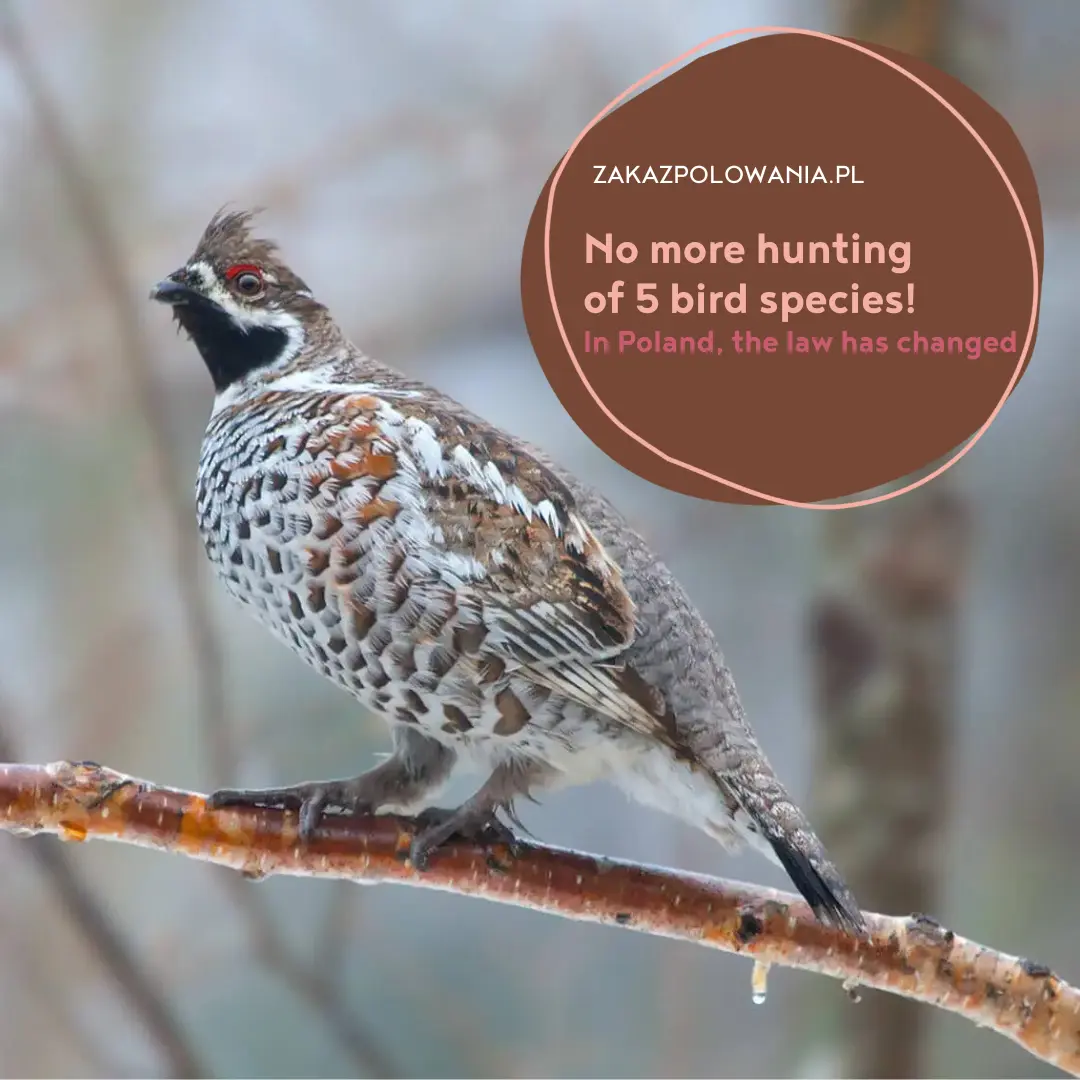The end of hunting for 5 bird species in Poland
On September 25, an amendment to the regulation on the list of game species unexpectedly appeared in the Journal of Laws. Minister Paulina Hennig-Kloska had already signed it on September 22, without announcing it publicly. In the simplest legislative way, five bird species were removed from the list of “game” animals (those that hunters are allowed to shoot): Hazel Grouse (Tetrastes bonasia), Common Pochard (Aythya ferina), Tufted Duck (Aythya fuligula), Eurasian Woodcock (Scolopax rusticola), and Eurasian Coot (Fulica atra). In this way, the government finally cut through the Gordian knot of bird protection.
Announcements about a hunting ban for certain birds had been appearing since the very beginning of Polska 2050’s leadership of the Ministry of Environment. Already in February 2024, Deputy Minister Dorożała promised a quick regulation removing four species from the list (teal, pochard, tufted duck, and coot). When it became clear that no regulation would be ready before the bird hunting season in September 2024, the conversation expanded to five or even seven species (Hazel Grouse, Mallard, Teal, Pochard, Tufted Duck, Woodcock, and Coot). The Deputy Minister promised such a regulation “by the end of the year” (2024), but it never came. When a draft finally appeared in January 2025, it met with strong opposition from the Polish Hunting Association (PZŁ). Its lobbying led to negative opinions even from regional assemblies and other ministers, citing economic losses for commercial hunting tourism, risks to defense infrastructure, aviation safety, and fears of bird flu outbreaks.
Another complication was legislative: while the regulation on game species is issued by the Ministry of Climate and Environment, removing species also requires amending other laws to keep consistency. Some of these fall under the Ministry of Agriculture, which must co-sign them. Controlled by the PSL party, the ministry resisted any changes limiting bird hunting. To save face, after losing the presidential election, the government floated the idea of a temporary moratorium on seven bird species, using regulations on hunting seasons to grant them year-round protection - but only starting in September 2026 and valid until 2035. Even then, the Ministry of Agriculture objected to protecting Mallards and Teal, reducing the number back to five.
At one point, Deputy Minister Dorożała even boasted that the regulation had already been signed, but at the last moment Minister of Agriculture Stefan Krajewski withdrew his consent. He publicly stated he would agree to a bird moratorium only if the long-standing hunting ban on moose (in force since 2001) was lifted.
Apparently, this was too much for Minister Hennig-Kloska. Hence the September 25 surprise in the Journal of Laws: a regulation simply removing Hazel Grouse, Pochard, Tufted Duck, Woodcock, and Coot from the game list, without waiting for other acts to catch up (they will have to be adjusted now, and it’s hard to imagine Agriculture still blocking them). This may be part of larger coalition politics, but the end result is clear: hunting these five bird species will stop from 2026 onwards.
The regulation takes effect on January 2, 2026. Since the hunting season on birds already ends in December, the real change will come in September 2026, when the new season starts. From then on, instead of 13, hunters will be able to target only 8 bird species: Greater White-fronted Goose, Greylag Goose, Bean Goose, Mallard, Teal, Woodpigeon, Partridge, and Pheasant. And that is, in fact, bad news not only for the birds of those eight species, but for all birds - both the five species now granted protection and others already protected. Hunters are not very skilled at distinguishing species of “geese and ducks,” as they themselves lump them together in their own statistics. Over recent years, in addition to legally hunted species, birds belonging to protected - and even endangered- species have also been killed. Some species are difficult to tell apart even for trained ornithologists, let alone for hunters firing shot at any birds that take off from the water in panic. Hunters have “by mistake” killed even swans.
https://www.youtube.com/watch?v=JAbpQY8H4x4
The absence of hunting for these five species does not actually cause hunters such great displeasure. Although the annual hunting plans ambitiously recorded intentions to kill several-teen thousand individuals of each of these species, in reality hunters killed roughly 1,000 Tufted Ducks, 1,000 Pochards, and 2,000 Coots per year, while about 200 Woodcocks and around 50 Hazel Grouse annually. Of course, these are still thousands of needless deaths of sentient beings. Yet birds of the remaining species suffer far greater losses: more than 200,000 birds are killed by hunters each year (over 60,000 “geese and ducks” and more than 130,000 pheasants), and taking part in their killing is often an attraction for foreign tourists. Sadly, that will not change…
Birds should simply be granted statutory protection by writing into the Hunting Law that they are not “game,” because killing them - and conducting “game management” in relation to them - has no biological justification, and certainly no ethical one. Only then would a ban on lead ammunition in wetlands truly make sense, because lead shot would not be needed for hunting at all.
That is why the “Let Them Live” campaign must continue. According to public opinion research, 92% of respondents support limiting hunting of birds.



